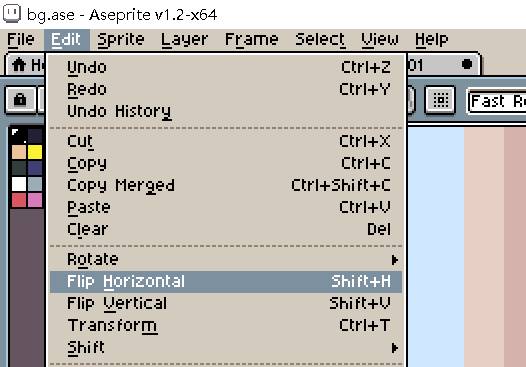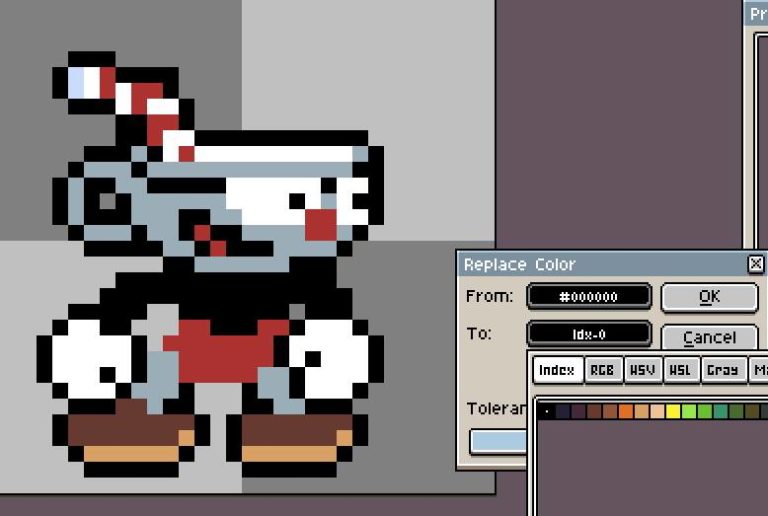

I found it helpful to maintain a “reference scene” which was, essentially, a screenshot from the game. Reference scene I used for Codename: Pandora I use size as the main example here, but there are other attributes you’ll want to keep consistent (such as color -which I’ll touch on later). If you use a lot of different sizes, your art will look like it was copy-pasted from different sources. It helps the art look uniform and cohesive. For instance, you’ll want the body parts of characters (head, eyes, torso, etc.) to all be of a similar size. By “style”, I mean components of the sprites follow the same conventions. In a similar vein, make sure every sprite in the environment sticks to a consistent style. What is the world you’re creating? What is the vibe? How should your player feel? Is it a go-lucky, lighthearted game? Cool, action, comic-book style game? Or a dark, melancholy environment, maybe with a twisted sense of humor? As you’re creating each sprite, you’ll want to think about how it fits into the world and contributes to the aesthetic.

When setting out to create art for your game, one of the first things you’ll want to do is decide on a concept.

If you want to do your own research on what pixel art editor is right for you, I recommend this video. With v1.3, I was able to create ALL of the pixel art assets for my game exclusively with Aseprite. I downloaded v1.3 through Steam and found that these new features fulfilled everything I needed for creating a tileset for a game (besides exporting and importing a tilsets, please add this feature!). However, the upcoming Aseprite v1.3 promises tilesetting features, and you can try it out now in their open beta. The current version of Aseprite (v1.2) doesn’t offer features to assist with tileset creation (e.g.

For many games, you’ll want to create tilesets for levels and maps. Except for one glaring hole: tilesetting.
#ASEPRITE FLIP FOR FREE#
Note: there is an option to compile it for free from source if you really want to.Īseprite, as far as I can tell, has the full set of features you might expect from a pixel art tool. Considering the 30+ hours I’ve already spent using it for a single game, I figure it’s worth the price tag. I love that it isn’t a subscription - just an upfront cost. This wealth of teaching material was the main selling point for me.Īseprite isn’t free, but it’s worth its $20 price tag. I base this statement on the number of tutorials and blogs that use or teach Aseprite. It’s one of the most commonly used pixel art tools out there, if not the most. I chose Aseprite because of its popularity within the pixel art community. lacks the ability to flip a selection), which led me to Aseprite.Īs a beginner, I wasn’t certain exactly what features I wanted, but I think most pixel art tools have similar feature sets. However, I found Piskel a bit sparse (e.g. It’s a minimal tool, so it doesn’t feel overwhelming as a beginner. It’s free and in-browser (no installation necessary), which makes it nice as a dabbler. You’ll need an editor for creating your sprites and tilesets.īefore this game jam, I used Piskel for tweaking sprites and experimenting with pixel art. I learned a few lessons that I think other beginners may find helpful:
#ASEPRITE FLIP CRACK#
It was my first time working with a team in a jam and my first crack at doing pixel art - or any kind of art - for a game (outside of the occasional sprite modification here or there). I participated in my third game jam last month, this time working with a team (shout out to Zackavelli and Draekdude). I created the pixel art! Asset pack available here. Screenshot from our game, “Codename: Pandora”.


 0 kommentar(er)
0 kommentar(er)
